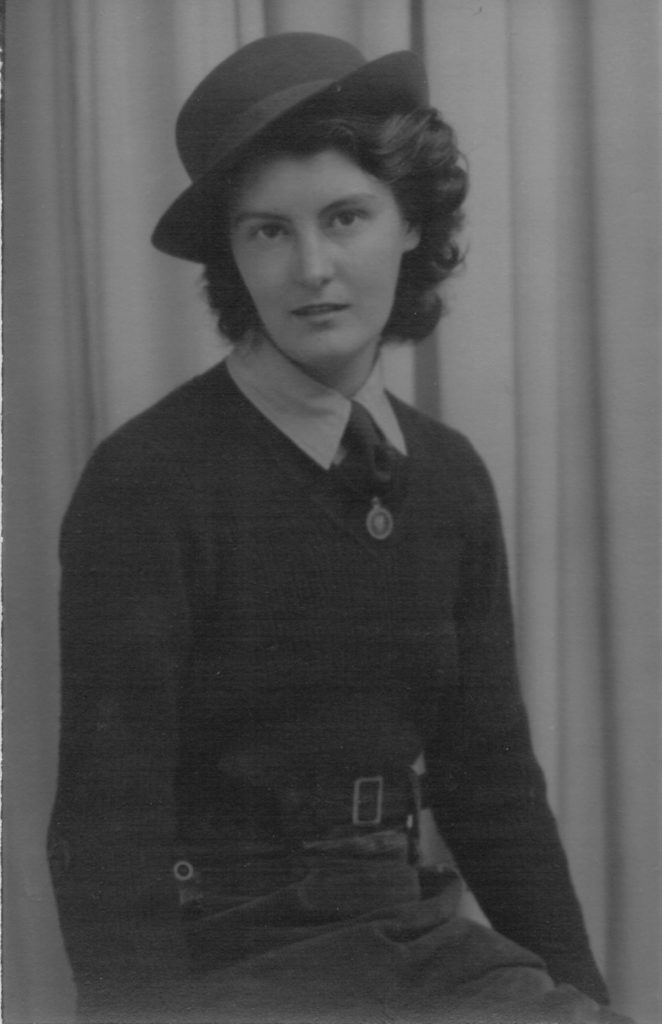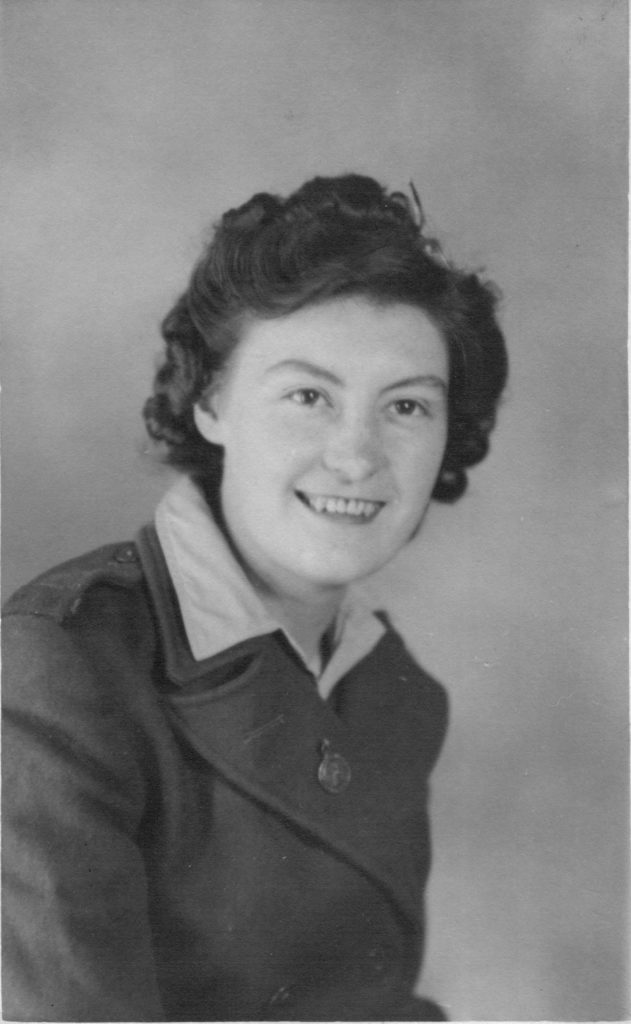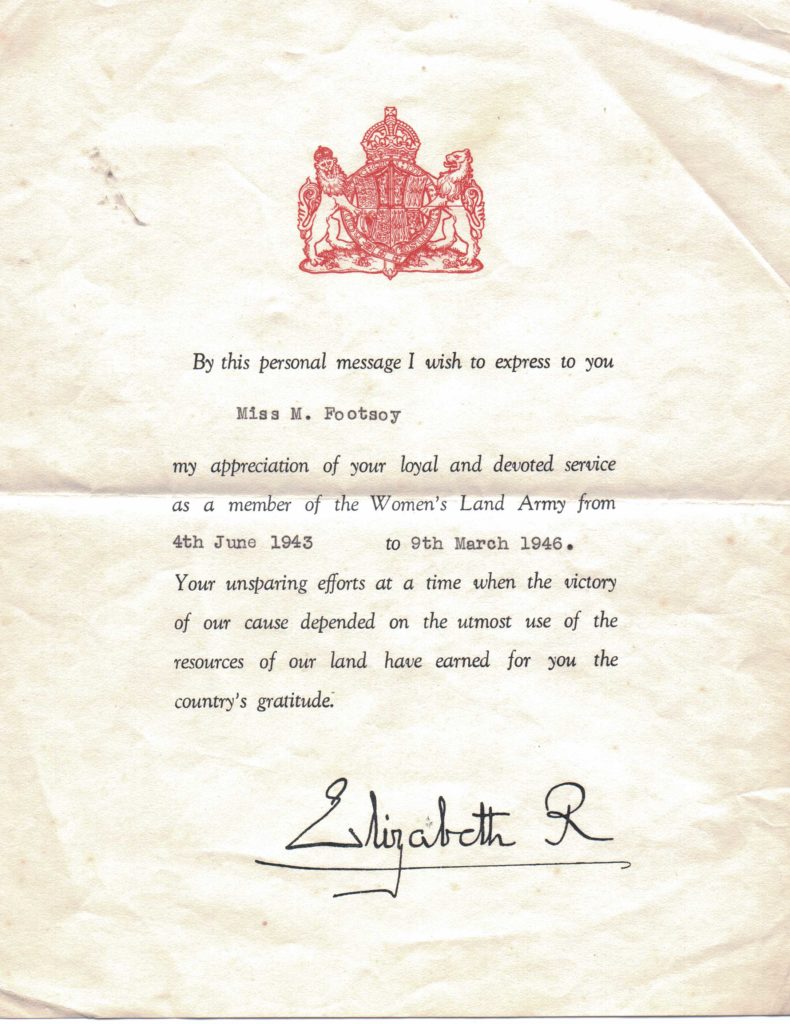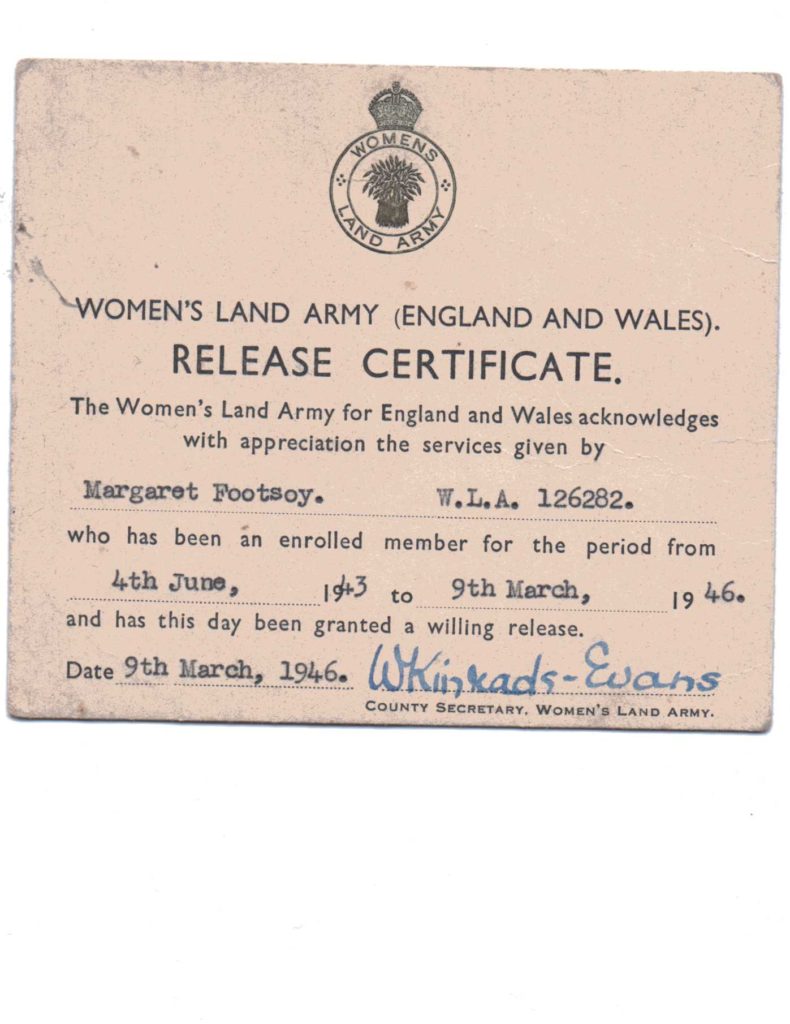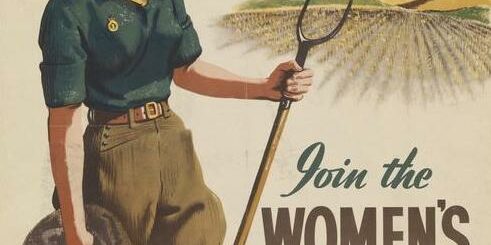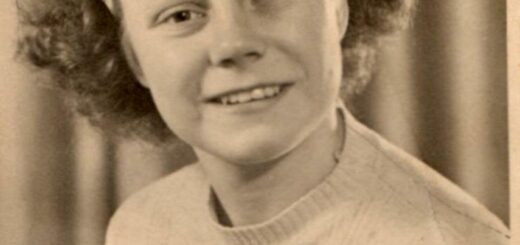Margaret Robinson (née Footsoy)
General Information
First Name(s): Margaret
Unmarried Surname: Footsoy
Married Surname: Robinson
Date of Birth: 31.10.1924
Place of Birth: Eccles, Lancashire
Date Joined WLA: 4.6.1943
Date Left WLA: 9.3.1946
WLA Number: 126282
Previous occupation: Librarian in a big firm in accounts dept.
Reasons for joining: Wanted to work outside in countryside.
Reasons for leaving: Discharged at the end of the war.
Family’s reaction to joining: Fully supportive of my intentions.
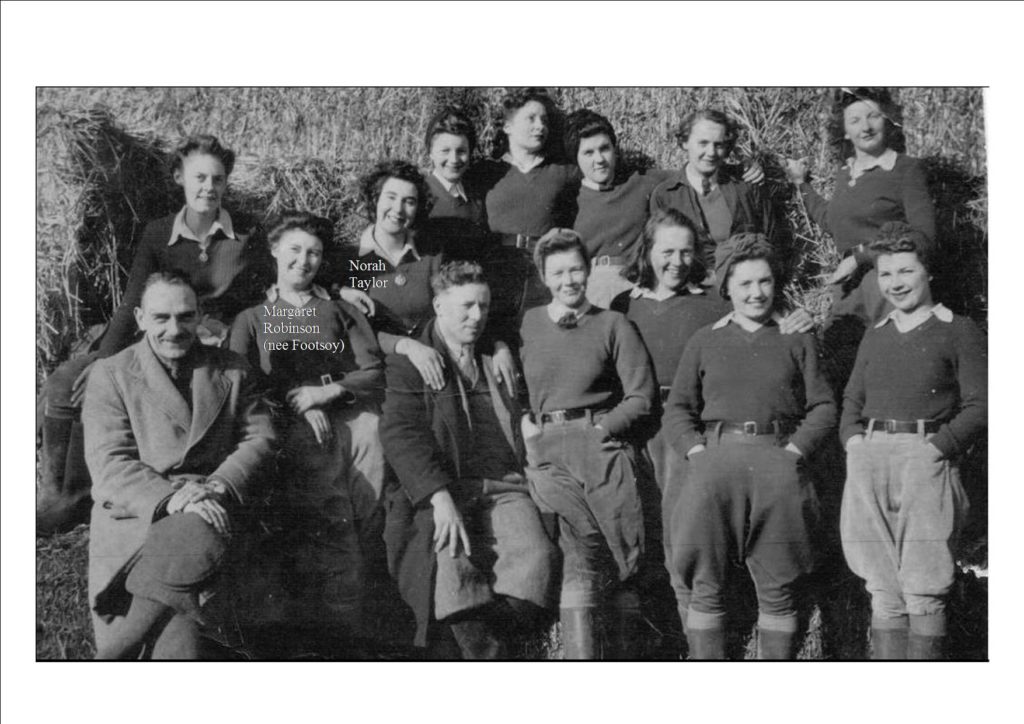
Employment
Worked in Little London Hall, Culcheth, Lancashire. Carried out rat catching for Lancs County War Agricultural Committee. Worked with Norah Taylor, Marjorie, Irene and Daphne.
Type of work undertaken: Thatching, grain stacks and rat catching.
Worked liked most and least: I liked learning about rat catching and I enjoyed finding traces and tracking rats, exploring farm buildings. Least liked – attitude of some farmers.
After initial farm training I was sent to Hutton Agricultural College for thatching training, as this was a seasonal job.
Was asked preference I volunteered for mole catching – no vacancies, so I was allocated rat catching with my friend Norah.
We then shared a room at Little London Hall for the duration and worked as a team.
I was very happy living there and doing the work.
It was very interesting learning about rats and enjoyed the independence for the two of us during the job. I especially liked tracking the trails of rats around the farms we visited.
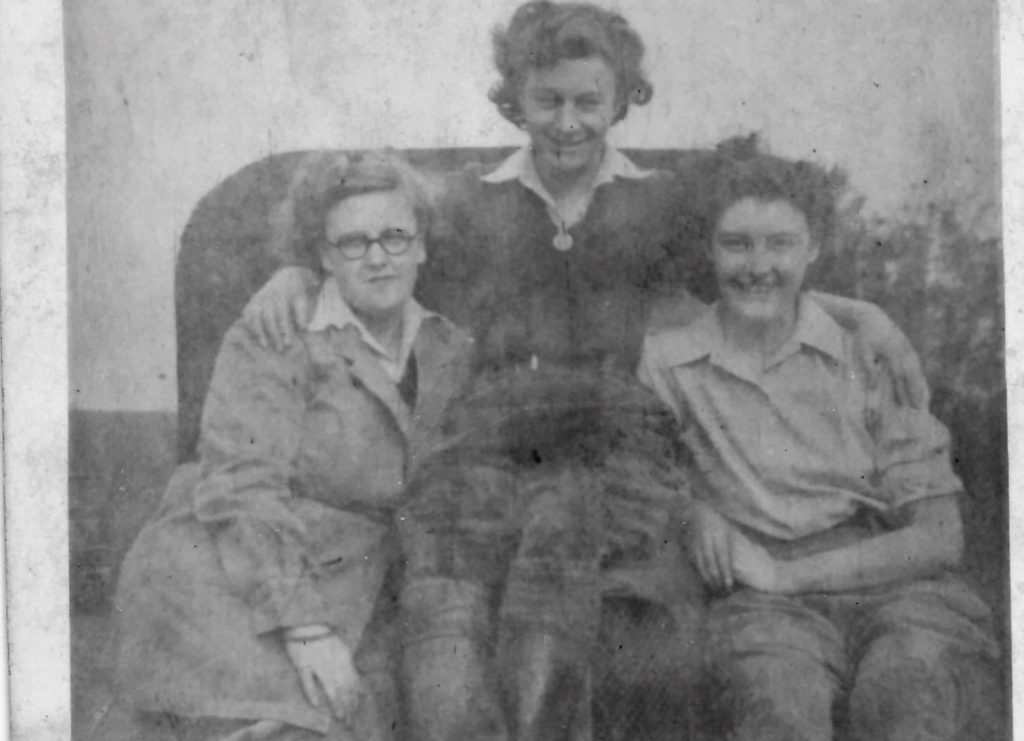
Margaret explains thatching and ratting in an interview with Viv Doyle. Listen below by clicking play.
Accommodation
Lived in agricultural College (Thatching), Hutton, near Preston
Margaret shares what life was like in her camp. Listen below by clicking play.
Life after the war
I tried to obtain work as a pest controller at Rentokil, but they were horrified that a woman should do rat catching. I then returned to clerical work in accounts department.
Then became pregnant so stayed home with my 3 children until adults then went to uni to gain qualification in social work, worked for Manchester Social Services until retirement.
How did work in the WLA effect your/ their life? Made me independent. Improved my health. Helped me to socialise.
Other information
Best and worst memories of time:
Best:
- Living in war workers accommodation at Little London Hall.
- Meeting a wide variety of people – social activities.
- Independence with Norah to do the work without anyone over you.
Worst: Working in the rain.
Opportunities to meet other Land Girls: Only met six other rat catchers based in Little London Hall.
Reactions of local people towards WLA: Very good generally. Farmers on some farms did not readily accept young girls could catch rats and objected being forced to do so. They grudgingly found that we could get rid of the rats.
Any outstanding events or achievements in WLA or in later life: At the age of 79 I obtained City and Guilds Qualification in Interior Design and thereafter ran courses in this, (and in beadwork) for the U3A over several years.
Any other comments on time in the WLA: The happiest time of my life.
Contributor Information
Name: Margaret Robinson
A summary from an interview with Viv Doyle.
Margaret joined the Women’s Land Army and did thatching, then rat-catching. Thatching had finished for the season so she was asked if she wanted to go into another branch of the Land Army. She volunteered with a friend for mole-catching, but pest officer said no vacancies so they ended up rat-catching.
After doing general farm work they were allocated to different jobs. Margaret was based at Hutton, near Preston. Eight of them worked together at thatching in the summer. There was a machine like a sewing-machine and you put reeds through it to stitch them and make mats about six feet long. You stitched those onto the thatch.
One would be making the thatch, others cleaning reeds, working as a team. They took turns doing all the jobs. They trained for rat-catching at a school in Liverpool and were trained, academically and practically, in the habits of rats and different poisons.
Put into a team. Poisons used: one made from Amazon tree bark; derivative of arsenic and zinc phosphide. They used traps as well. Arsenic had to be mixed with sugar because it was bitter, the tree bark was ineffective but zinc phosphide, a black powder, was used most of the time. The only ‘health and safety’ advice was not to put it on your fingers and eat it. One mother made her daughter a kind of gas mask, made of cloth, but it was too irritant to use. Margaret did not suffer health problems as a result of this work.
Margaret was based in Culcheth, Lancashire, and the farms were situated around a twenty mile radius. Farmers weren’t very pleased when two nineteen-year-old girls turned up but it was a wartime requirement that they must get rid of rats because of food shortage. The farmers still had to pay the pest officer for the service, which they didn’t like.
Margaret tells a story about rats in a grain barn. They were moving about 50 sacks of grain when a rat shot out. The girls knew that rats left a scent trail and would come back the same way. Margaret caught it with her gum boot and hit its head with a heavy metal spoon they all had.
If no-one had done anything about a rat infestation they could get about forty or fifty, but they tended to die under stacks or barns if poisoned. The girls used to look for traces of rats first – in buildings, ditches and hedges – then put down bait, biscuit meal mixed with water; they had to remember where they had put it. If the bait was untouched next day you moved it, but if it was taken you knew it was an active hole. On the third day you put poison down, then on the fourth day you collected the dead rats and took them back to camp to be incinerated.
A photo of Margaret’s shows about a dozen girls on the course in Lancashire. While doing this war work they lived in camps, where all sorts of people stayed, including ENSA people (the Entertainments National Service Association), schools evacuated from London with the staff staying with the school, different war workers of all kinds and six Land Army girls in same camp at Culcheth.
Life in the camp
The girls were paid twenty-five shillings a week for their war work. Their board and lodging was provided. Although wartime food, they did their best. But Margaret didn’t get an egg, because they were given out on Sundays and she wasn’t there.
They had cereal and fried breakfast, and toast. As they were out all day they got sandwiches: thick bread with herrings or pilchards for one sandwich and the other was probably cheese – weird mixture to have together in a packet.
At night soup and dinner, and supper if you wanted it about 10 pm. The camp had H-shaped blocks: the bit in the middle was bathrooms and cloakrooms, while each side had corridors with bedrooms either side. Two shared a bedroom but you had your own (Army-type) bed, chest of drawers and single wardrobe. Margaret was there weekdays and went home to parents at weekends, although she occasionally stayed the weekend.
While still probationary rat-catchers they went with another team to Winwick asylum, which was frightening because they went through locked doors all the time, like a bit workhouse. They had a dance at Christmas time, to which American soldiers were invited as well. Burtonwood aerodrome wasn’t far away. Margaret used to go out with one of the Americans in a foursome with her friend. But they didn’t have a cinema nearby.
